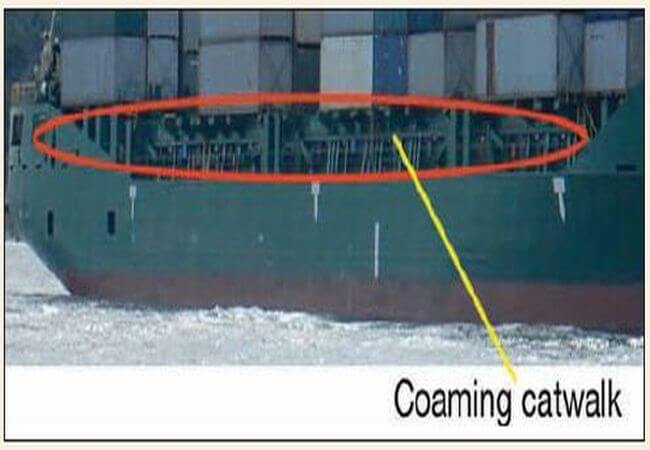Real Life Incident: Close Quarters Between Ferries
A ferry was inbound to a small port in daylight conditions with good visibility at a speed of 9.5 knots. A bridge team member called the port Vessel Traffic Services (VTS) to inquire if another ferry, already in the port and due to depart, would in fact leave on the specified time. Port VTS responded that the ferry would depart in the next ten or 15 minutes and that it would be best if the approaching vessel held position outside the port until the outbound ferry left, given the constrained nature of the port. This information was given as a ‘suggestion’ and not as an instruction.

About 18 minutes later, port VTS called the inbound ferry to advise that the outbound ferry was singling up and would be leaving in the next minute or two. This was acknowledged by the inbound ferry. However, instead of holding position, they continued inbound at a reduced speed of about six knots.
On the departing ferry, the bridge team were not monitoring traffic prior to departure; instead, they relied on information from VTS regarding the position of the inbound vessel. The OOW stated that the ECDIS and radar were checked only after all lines were clear and they had lifted off the berth. They were surprised to see the inbound ferry, now very close, and only quick manoeuvres and last-minute communication between the vessels helped avoid collision.
As it transpired, a relieving Master was bringing the inbound ferry into port as a training exercise under the supervision of the Master. Poor communication between the Master and the relieving Master contributed to the close quarters situation developing.
Lessons learned
As with most incidents and accidents, several contributing factors conspired to bring about the close quarters situation;
- The VTS only ‘suggested’ that the inbound ferry stay outside the port while the departing ferry was leaving. For unknown reasons the inbound ferry’s bridge team decided to ignore this suggestion and entered the port anyway.
- The inbound ferry’s bridge team had less than adequate communications with each other and with outside actors.
- The departing ferry’s bridge team had less than adequate situational awareness of the port traffic situation and in particular the position of the incoming ferry
With or without a pilot, always ensure you have an accurate picture of the traffic situation before departure. In constrained waterways, it is easier to hold the berth while traffic passes than be obliged to manoeuvre.
Reference: The Nautical Institute
Do you have info to share with us ? Suggest a correction
About Author
Marine Insight News Network is a premier source for up-to-date, comprehensive, and insightful coverage of the maritime industry. Dedicated to offering the latest news, trends, and analyses in shipping, marine technology, regulations, and global maritime affairs, Marine Insight News Network prides itself on delivering accurate, engaging, and relevant information.

About Author
Marine Insight News Network is a premier source for up-to-date, comprehensive, and insightful coverage of the maritime industry. Dedicated to offering the latest news, trends, and analyses in shipping, marine technology, regulations, and global maritime affairs, Marine Insight News Network prides itself on delivering accurate, engaging, and relevant information.
- Real Life Incident: Vessel Collision in Good Visibility
- Real Life Incident: Severe Injury To Deck Crew While Leaving Berth
- Real Life Incident: Departure Damage in Very Restricted Waterway
- Real Life Incident: Low Situational Awareness Has High Impact Consequence
- Real Life Incident: Fouled Anchor in a Designated Anchorage
- Real Life Incident: Fire On Barge Carrying Scrap Metal Causes $7 Million Worth Of Damage
Latest Case studies Articles You Would Like:
Subscribe To Our Newsletters
By subscribing, you agree to our Privacy Policy and may receive occasional deal communications; you can unsubscribe anytime.
Web Stories




















